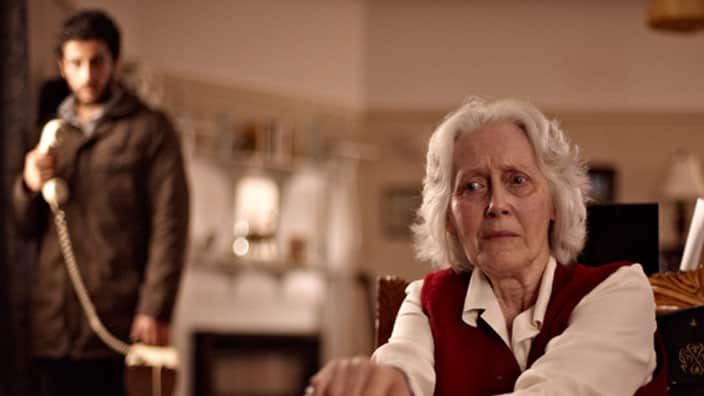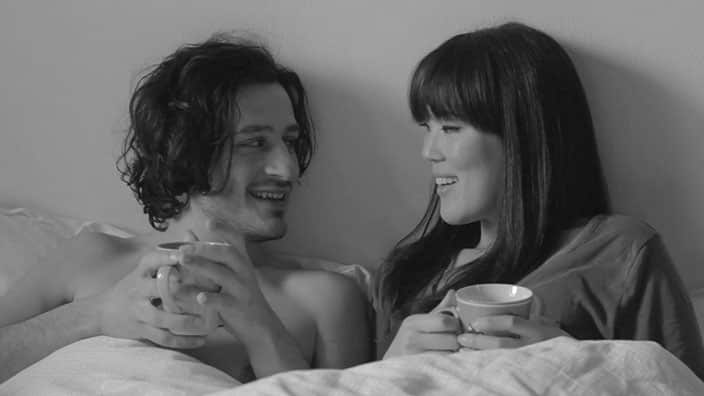People who grew up with some degree of outsider status often drive the feature films that reflect Australia’s multiculturalism. Many in planning right now demonstrate this.
In My Country, five young Lebanese men kidnap the daughter of a wealthy family that is involved in conflicts abroad. Writer/director Serhat Caradee () came to Australia from Turkey with his parents when he was two years-old.
In Trapeze, the daughter of refugees decides to go to Cyprus after her mother bequeaths her land there. Co-writer and director Kay Pavlou (Who Do You Think You Are?) was born in Australia a decade after her father and a year after her mother arrived – both Greek Cypriots.
In Riz, a group of school leavers, including some refugees, forgives the member of the group who betrays them. It’s co-written and co-directed by Guido Gonzalez and S. Shakthidhara, who arrived in Australia from Sri Lanka aged one.
The unfinished and also fit the bill, as do turn-of-the-century hits (2000), which Melina Marchetta, who’s of Italian descent, wrote based on her own novel, and (2000), written by Chris Anastassiades and Nick Giannopoulos. (The spelling of those surnames says it all!) Where the creative team doesn’t ‘own’ a multicultural story, that is, it has no personal links to them, the film might be based on a book – think (2009), based on Li Cunxin’s autobiography.
Given independent filmmaking requires enormous commitment and often reflects personal preoccupations, all this is not surprising. And of course there are times when significant research has driven development, not a cultural link, as with writer/director Abe Forsythe’s Down Under, a comedy exploring racism.
“The film takes place 24 hours after the Cronulla riots and is about two carloads of people on a retaliation mission,” says Forsythe. “One’s from Lakemba, one’s from The Shire. Over the years, I’ve heard lots of stories, got lots of advice, learnt a lot: I wanted it to be as authentic as possible and represent everyone equally.”
Melbourne filmmaker Thomas Baricevic came from what was then Yugoslavia aged two but is doing a film about the Sudanese communities he’s worked with for six years. His new short, Hope City, about a former boy soldier trying to find his place in Australia, is the first act of a feature to be called Lost Boy.
Despite all these examples, the consensus is that few films across the national film slate truly reflect Australia’s diversity. And no-one is officially insisting they should. State and federal government film agencies often use cultural reasoning – the promotion of social inclusion and understanding for example – to justify using taxpayer dollars to pay for feature production, yet immigrant and refugee filmmakers haven’t been the beneficiaries of specific opportunities as indigenous filmmakers have to great effect, with hits such as , and .
“I don’t think films are pamphlets or sermons, nor Australia a genre, so these things are not very pertinent to me,” says vastly experienced producer Antony I. Ginnane, former president of Screen Producers Australia.
His recent (pictured below), in which a Holocaust survivor (Julia Blake) is held hostage by a young Muslim radical (Firass Dirani), was a suspense thriller, “It was [Hitchcock’s 1944] Lifeboat,” says Ginnane. “The Palestinian issues [included] were just background to me. I don’t think we have an obligation except to cinema itself.” But many others strongly believe that national cinema industries, especially publicly-funded ones, have some responsibility to open hearts and minds – and that great stories are missed if diversity is ignored.
But many others strongly believe that national cinema industries, especially publicly-funded ones, have some responsibility to open hearts and minds – and that great stories are missed if diversity is ignored.

“Filmmaking is about having something to say and letting people think about it,” says Caradee of his own cinema practise. His production company’s stated aims include challenging audiences and asking questions about identity and justice. The radicalisation of young Australian men, a hot political issue, is a dominant theme in the planned My Country.
“In TV we tell these stories because we have SBS and the ABC, but there’s no equivalent in film,” says Caradee. More diversity within the filmmaker ranks will result in more diverse films, he adds.
“When stories are written by people not from the culture in which they’re set, they come up fake and the rhythms of speech are wrong,” says scriptwriter and assessor Karin Altmann. She estimates that of the 130-160 scripts she reads annually, only about a dozen are not driven by Anglo Saxon creators.
Caradee is for affirmative action focussed on multicultural groups and involving mentoring and technical upskilling; she’s more into creating opportunities, more broadly. “Writers, emerging filmmakers, people from other cultures: all have less opportunity, and when you open up opportunities it is surprising what happens,” she says.
For anyone it’s difficult to access funding from Screen Australia, the country’s biggest film financer. There’s huge pressure on available resources and considerable experience and success requirements. It’s hard work to understand the system and take advantage of it.
Another aspect to multiculturalism is Australian cinema’s appalling record of colour-blind casting. In other words, lead roles are usually played by white people, and taxi drivers and criminals by brown or black people.
One reason Caradee switched from acting to directing was the lack of decent roles for people that looked like him and Pavlou reports that there’s often surprise – from producers, casting agents, distributors – when she suggests a Greek or indigenous person for a role where ethnicity is not specified. That is, if the role is a detective or accountant, not the boy next door or the shop owner.
“Robert De Niro, Al Pacino, Halle Berry and Denzel Washington are embedded into the fabric of American films,” she says. “They’re not outsiders... They are sometimes playing roles about their race but mostly just about them as humans.”
Altmann and her son, Samuel Krum, have been working on Love Proof, which has Greek, Indian, Jewish and black American lead characters.
“It’s a week in the lives of a group of articulate, love-shy late-20-somethings who learn in the end that love is a risk you have to take,” says Altmann, who came to Australia aged five from Germany. “Samuel had friends of every possible colour and they grew up running in and out of my house and he wrote about them. “The best case of colour-blind casting is Deborah Mailman in anything. No-one mentions that she’s indigenous.”
The cast of Chris Pahlow’s Play It Safe (pictured below), about a wannabe musician in the Melbourne music scene, reflects what’s normal to him after growing up in Sunshine and attending Melbourne High School. His lead actors have parents born in Greece, Hong Kong, Sri Lanka and Germany.
“It doesn’t bother me at all what they look like: I was looking for people that would create interesting characters,” he says. CuriousWorks is a community arts/cultural development outfit in Sydney’s western suburbs. First feature Riz hits all the not-for-profit’s usual marks: involving community, being part of a bigger cross-platform venture, training the next generation simultaneously and having a social and creative impact. Half a dozen features are in development.
CuriousWorks is a community arts/cultural development outfit in Sydney’s western suburbs. First feature Riz hits all the not-for-profit’s usual marks: involving community, being part of a bigger cross-platform venture, training the next generation simultaneously and having a social and creative impact. Half a dozen features are in development.

“We won’t just walk into a community and say, ‘That’s a great story, let’s tell it’, says Shakthi. “It’s all about being committed for the long term. True diversity has always been our heart and soul… In Surry Hills there are a lot of different coloured faces but it is pretty monocultural. On the streets of western Sydney you meet the whole world.”
He believes digital technology is providing opportunities for communities on the margins to become adept at artistic practice, and hopes they can carve out a more significant space in the future than they have in the present. The CuriousWorks catchcry is “Our ultimate goal is redundancy”; in other words, it can retire when the communities are bulging with artists and filmmakers.
